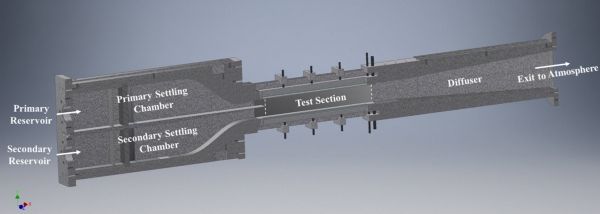Many of today’s scientific processes are simulated using computer-driven mathematical models. But for a model to accurately predict how air flow behaves at high speeds, for example, scientists need supplemental real life data. Providing validation data, using up-to-date methods, was a key motivating factor for a recent experimental study conducted by researchers at the University of Illinois at Urbana-Champaign.
“We created a physical experiment that could measure the flow field that others try to simulate with computational models to predict turbulence. It validates their models and gives them additional data to compare their results against, particularly in terms of velocity,” said Kevin Kim, a doctoral student in the Department of Aerospace Engineering.
Kim said the wind tunnel that was built and the design of the experiments were based on simple geometry and fundamental physics that allowed them to manipulate two streams of air flow, one from an air tank and the other from ambient room air. There is a physical barrier between the two streams before they reach the test section of the wind tunnel, where they begin to mix. Images are taken of seed particles in the flow.
Read more at University of Illinois College of Engineering
Image: Compressible mixing layer facility CAD schematic. CREDIT: University of Illinois College of Engineering.


